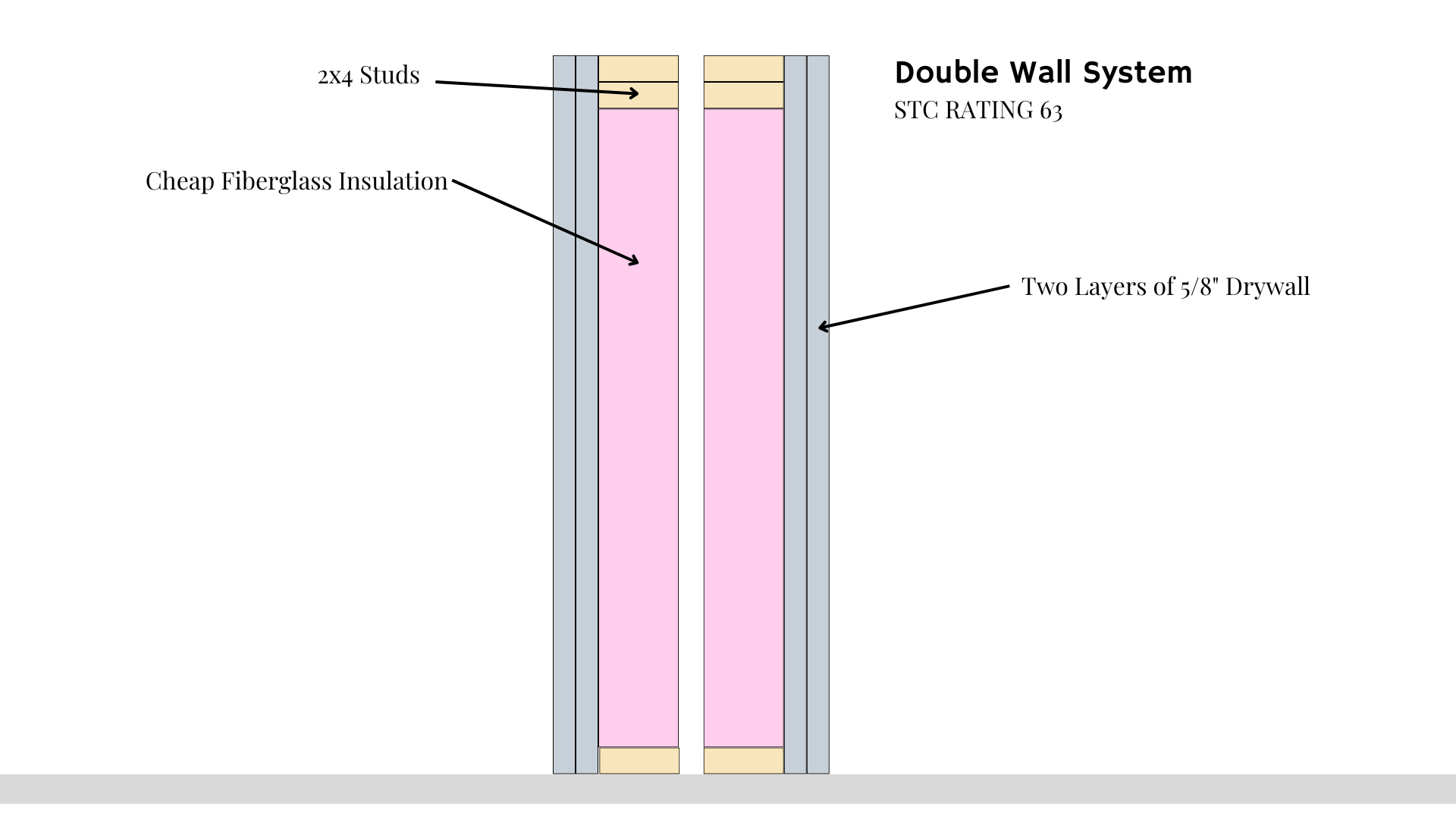The Science Behind Soundproofing
Mar 31, 2025
Ever Wonder How Soundproofing Really Works?
In this article, I’ll teach you the fundamentals of sound isolation so you can design your own soundproof systems and recognize when someone is selling you something that won’t deliver real results.
The Three Pillars of Sound Isolation
Every soundproofing system relies on three core principles: mass, airtight seals, and decoupling. Let’s take a deeper look at each.
Mass
Mass is the most powerful factor in sound isolation. The more mass you add, the more sound you block. This principle is backed by Mass Law, which states that every time you double the mass of a structure, you gain approximately 6dB of transmission loss. While this isn’t quite a perceived halving of volume (which occurs at 10dB), it’s a significant reduction.
For example, upgrading from a single layer of 5/8" drywall to two layers results in a 6dB drop in sound transmission. Simply put, mass is the foundation of soundproofing.
Airtight Seals
Every element of a room—walls, floors, ceilings, doors, and windows—must be completely sealed to be effective at blocking sound. Even small cracks as tiny as 1/16” can allow sound to leak through, drastically reducing isolation. No matter how much mass you have, if your structure isn’t airtight, it won’t be soundproof.
Decoupling
Sound travels easily through solid materials. Interestingly, heavy materials like concrete can actually transmit sound more efficiently than drywall because the speed of sound is higher in denser materials. This is why a hammer tap on one side of a concrete wall can be heard clearly on the other side.
To prevent sound from transferring through structures, decoupling is essential. This means physically separating parts of the structure using techniques like double walls, resilient channels, or acoustic clips. Without decoupling, even the heaviest walls won’t be fully soundproof.
Mass-Spring-Mass: The Key to Sound Isolation
The most effective soundproofing design follows a mass-spring-mass system.
-
Mass: Any heavy material (drywall, concrete, plywood, etc.).
-
Spring: A flexible element that absorbs vibrations—this can be air, foam, fluffy insulation, or even mechanical springs.
-
Mass: Another heavy material on the opposite side.
This structure effectively reduces sound transmission by absorbing and dissipating energy between the two masses.
Example 1: Extreme Soundproofing
Imagine a wall built with concrete blocks filled with sand, followed by a 1-foot air gap filled with fiberglass insulation, and then another sand-filled concrete wall.
-
The two massive walls block most sound, including deep bass.
-
The air gap acts as a flexible spring, reducing sound transmission.
-
The fiberglass insulation dampens resonances within the system.
Example 2: A Practical, High-Performance Design
A more realistic approach follows a tried-and-true method:
-
Construct a 2x4 stud wall with two layers of 5/8” drywall.
-
Build a second stud wall, spaced 1” away from the first.
-
Fill both stud walls with R13 fiberglass insulation.
-
Finish the second wall with two more layers of 5/8” drywall.
This design achieves an STC rating of 63, making it highly effective for recording studios and other sound-sensitive environments.
Keep It Simple
Now that you understand the fundamentals, the key to successful soundproofing is simplicity. Overcomplicating designs often leads to unnecessary costs and complexity. When faced with a soundproofing challenge, ask yourself these four essential questions:
-
Is there enough mass on both sides of my assembly?
-
Is there a sufficient spring in my mass-spring-mass system?
-
Is my assembly completely airtight?
-
Have I decoupled my assembly from the surrounding structure?
If you consistently apply these principles, you’ll achieve real results. The biggest challenge in soundproofing isn’t understanding the basics—it’s navigating the unexpected problems that arise during the design and construction process.
Need Help With Your Soundproofing Project?
Soundproofing a room requires time and expertise. If you don’t want to spend months learning acoustic engineering, why not get expert guidance?
I offer a free Soundproof Clarity Call to help you identify potential roadblocks in your design. If you’re feeling stuck on any part of your soundproofing project, let’s talk.
Click the link below to schedule a free 30-minute Zoom call with me.
Do You Want To Learn More About Soundproofing?
Join Our FREE Soundproofing Workshop


